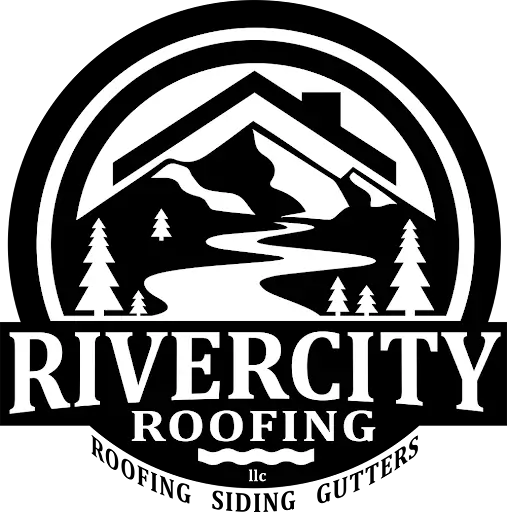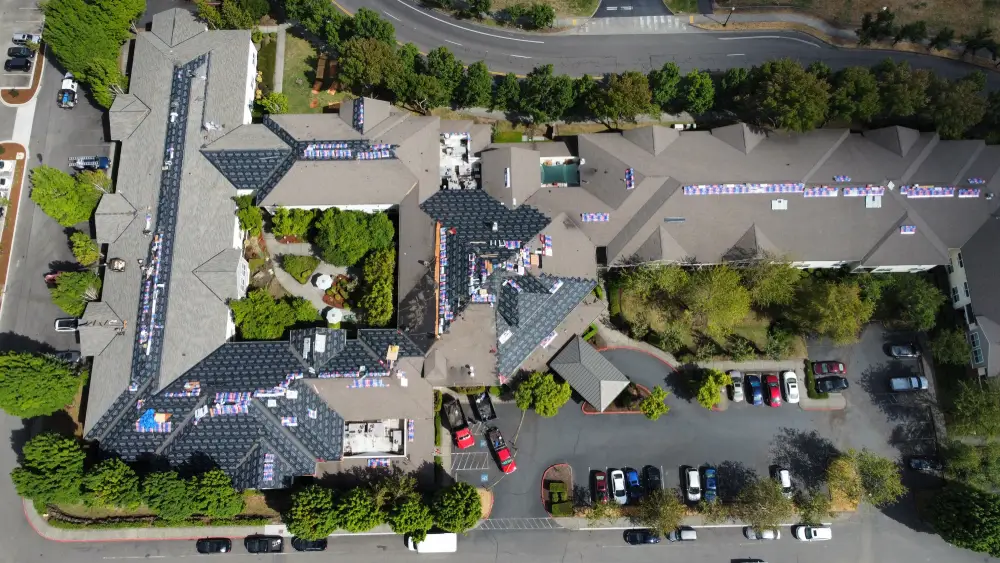As commercial building owners and property managers approach 2024, they face a critical challenge: determining the commercial roof replacement cost for their commercial buildings. The roof is a vital component of any commercial building, protecting valuable assets and ensuring business continuity. Understanding the expenses associated with replacing a commercial roof is crucial for budgeting and planning purposes.
This article delves into the factors that influence commercial roof replacement costs, including material types, labor expenses, and hidden costs. It provides insights into average prices for different roofing materials and offers tips to reduce expenses without compromising quality. By examining these aspects of roofing warranties, building owners and managers can make informed decisions about their commercial roofing projects and prepare for the financial implications of roof replacement in 2024.
Factors Affecting Commercial Roof Replacement Costs
The cost of commercial roof replacement depends on several key factors. Understanding these elements helps build owners’ and managers’ budgets effectively for this significant investment in commercial roofs.
Size of the Building
The roof’s size has a substantial impact on the overall cost built up roof. Larger roofs require more materials and labor, which typically results in higher expenses. However, it’s worth noting that larger roofs often have a lower cost per square foot compared to smaller ones due to economies of scale.
Type of Roofing Material
The choice of roofing material significantly influences the project’s cost. Common options commercial roofing material include:
- Single-ply membranes (TPO, PVC, EPDM)
- Built-up roofing (BUR)
- Modified bitumen
- Metal roofing
- Asphalt shingles: Affordable and commonly used on sloped roofs, offering ease of maintenance and efficient water evacuation.
- Built-up bituminous roofing: A layered system providing enhanced protection for flat roofs, known for its cost-effectiveness and durability.
Each roof structure material varies in price, durability, and installation complexity. For instance, metal roofing tends to be more expensive initially but offers a longer lifespan and better energy efficiency.
Labor Costs
Labor typically accounts for a significant portion of the total replacement cost. Factors affecting labor costs include:
- Roof complexity (slopes, peaks, valleys)
- Removal of existing roofing
- Installation method (ballasted, mechanically attached, or adhered)
- Accessibility of the roof
Location and Climate
The building’s location influences costs in several ways:
- Regional material and labor rates
- Local building codes and regulations
- Climate considerations (e.g., wind resistance requirements)
- Urban vs. rural settings (affecting accessibility and permit costs)
Climate plays a crucial role in material selection, as certain roofing systems perform better in specific weather conditions.
Average Costs by Roofing Material Type
The cost of replacing a commercial flat roof can vary significantly depending on the material chosen. The commercial flat roof replacement cost varies significantly depending on the type of roofing material chosen. Each material has its unique benefits and price points, influencing the overall project expense. Commercial flat roofs, such as those made from EPDM and TPO, are known for their durability and energy efficiency. Here’s a breakdown of average costs for popular commercial roofing materials in 2024:
Single-Ply Membrane Roofing
Single-ply membranes are widely used in commercial roofing due to their durability and ease of installation. The cost of these materials has increased slightly since 2019 due to new tariffs on imported Steel. Current pricing for single-ply membrane roofing includes:
- TPO (Thermoplastic Polyolefin): $3 to $5 per square foot
- PVC (Polyvinyl Chloride): $3 to $5 per square foot
- EPDM (Ethylene Propylene Diene Monomer): $5 to $13 per square foot
Metal Roofing
Metal roofing has gained popularity for its longevity and energy efficiency. The cost of metal roofing varies based on the specific type:
- Corrugated Steel (with exposed fasteners): $5.00 – $6.00 per square foot
- Metal Shingles: $8.00 – $11.50 per square foot
- Metal Standing Seam: $10.00 – $13.00 per square foot
The total estimated cost for a metal roof replacement ranges from $8,000 to $24,000.
Built-Up Roofing (BUR)
Built-Up Bituminous Roofing, also known as BUR, is a traditional multi-layer roofing system that offers enhanced protection for flat roofs in commercial properties. It is a traditional multi-layer roofing system, offers durability and weather resistance built up roofs. The cost for BUR installation typically ranges from $4 to $10 per square foot.
Green Roofing Systems
Green roofs have become increasingly popular due to their environmental benefits and energy efficiency. The cost for green roofing systems varies based on the type and complexity:
- Extensive green roofs: $10 to $50 per square foot
- Intensive green roofs: $20 to $200 per square foot
The average estimated cost for a green roof system installation ranges from $12,000 to $40,000 or more.
Hidden Costs to Consider
Maintaining commercial roof systems is crucial to avoid hidden costs that can arise during a commercial roof installation or replacement project.
When planning a commercial roof replacement, building owners and managers should be aware of several hidden costs that can significantly impact the overall budget. These additional expenses often go unnoticed during initial estimates but can add up quickly.
Removal of Old Roof
The process of removing the existing roof is a crucial step that comes with its own set of expenses. The cost of removal and disposal can range from $1,000 to $1,500, depending on the size and type of the old and new roof used. Factors affecting this cost include:
- Material type: Heavier materials like concrete tiles incur higher disposal fees compared to lighter options such as cedar shakes.
- Special handling requirements: If the current roof contains hazardous materials like asbestos, removal costs increase due to specialized handling procedures mandated by the EPA.
- Recycling opportunities: Some materials, such as metal roofing, can be recycled, potentially offsetting disposal costs.
Structural Repairs
Upon removing the old roof, underlying issues may be discovered that require immediate attention. These can include:
- Rotten wood
- Weak rafters
- Water damage to decking, cover board, or insulation
Addressing these problems has a substantial impact on the project’s cost and timeline. To mitigate financial surprises, it’s advisable to include a contingency fund in the roofing contractor’ budget.
Upgrades to Meet Building Codes
Commercial structures are subject to various local, regional, state, and industry-regulated code requirements. These may include:
- Roof slope specifications
- Insulation standards
- Ventilation requirements
Ensuring compliance with these regulations can significantly increase both material and labor costs.
Disposal Fees
The cost of disposing of the old roofing material is an often-overlooked expense. Factors influencing disposal fees include:
- Weight of the material
- Local waste management regulations
- Availability of recycling options
Some materials offer recycling possibilities, which can help offset disposal costs while providing a more environmentally friendly solution.
Tips for Reducing Commercial Roof Replacement Costs
Regular Maintenance
Regular maintenance of commercial roof is crucial to extend their lifespan and reduce overall costs. It involves performing various proactive tasks to keep the roof in good condition. A well-maintained commercial roof system can last significantly longer, saving money by reducing the need for repairs or replacements. Routine inspections and cleaning help address small problems before they escalate into expensive issues. Building owners should keep detailed records of all maintenance activities, including inspection dates, repairs made, and associated costs. This information helps track trends and identify areas of concern that need addressing.
Timely Repairs
Addressing roof damage promptly has an influence on preventing minor issues from becoming major problems. Timely repairs are especially important for commercial flat roofs to prevent minor issues from escalating into major problems. Timely repairs help maintain the roof’s structural stability and support the building’s overall safety. By fixing issues quickly, building owners can extend the roof’s lifespan, delay costly roof replacements further, and safeguard interior assets. Ignoring or postponing repairs can lead to extensive damage, resulting in higher repair costs and potential business disruptions. Professional contractors have the expertise to accurately diagnose and repair various roofing issues, using high-quality materials that ensure durability and long-lasting results.
Energy-Efficient Options
Flat roofs can be particularly energy-efficient, especially when using materials like TPO and white-coated metal roofs.
Investing in energy-efficient roofing materials has an impact on long-term cost savings. Cool roofs, which utilize lighter colors with higher solar reflectance, can reduce energy consumption in the summer months. These roofs typically have temperatures 50°F cooler than traditional roofs, leading to lower energy bills. Options like TPO (Thermoplastic Polyolefin) and metal roofs with white coatings can redirect up to 90% of the sun’s thermal energy, further boosting savings. Additionally, energy-efficient roofs may qualify for tax incentives, potentially saving up to $1 per square foot for buildings with 50% energy savings.
Comparing Multiple Quotes
Obtaining multiple quotes from different, commercial roofing systems and contractors has an influence on making informed decisions and potentially reducing costs. Building owners should compare more than just prices when evaluating quotes. They should examine line-by-line items, including materials, labor costs, and incidentals such as debris removal and cleanup. It’s crucial to ensure that all quotes cover the same scope of work and roofing system type. While labor costs may vary, the lowest price is not always the best option. Higher-paid teams might have more training or provide better long-term results. Additionally, building owners should consider the reputation of contractors, review online reviews, and request portfolios of completed projects.
Conclusion
Navigating the complexities of commercial roof replacement costs requires careful planning and consideration of various factors. From the size of the building to the choice of materials, each element plays a crucial role in determining the overall expense. By understanding these factors and exploring different commercial roofing system options, building owners and managers can make informed decisions that balance cost-effectiveness with long-term durability and performance.
To minimize expenses without compromising quality, it’s essential to focus on regular maintenance, timely repairs, and energy-efficient solutions. Getting multiple quotes from reputable contractors and being aware of potential hidden costs can also help in managing the project more effectively. In the end, a well-planned commercial roof replacement not only protects the building but also contributes to energy savings and increased property value, making it a worthwhile investment for the future.


